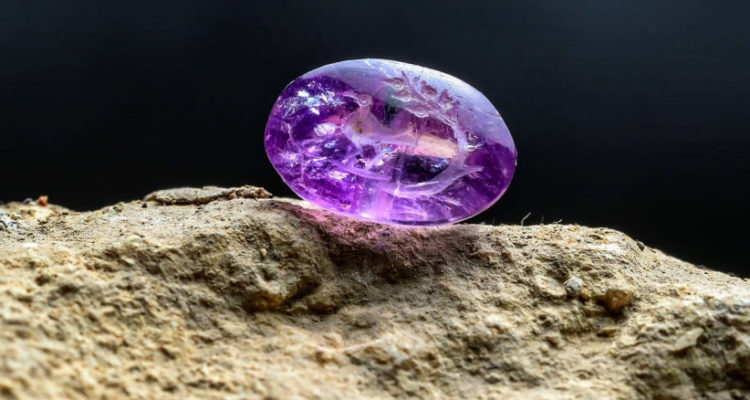Until now there have only been written descriptions of the Balm of Gilead plant, etched on the discovered stone.
By Batya Jerenberg, World Israel News
A tiny gem lost for 2,000 years in the ancient sewers of Jerusalem contains the first etching ever found of the balsam plant from which the Balm of Gilead was produced, experts from the Israel Archeological Authority (IAA) said Thursday.
The beautiful amethyst, measuring a mere 10X5mm and 7mm thick, was found by participants in a long-running archeological sifting project in the Emek Tzurim National Park, who at the time were going through dirt excavated from deep below the Western Wall.
“This is an important find because it may be the first time a seal has been discovered in the entire world with an engraving of the precious and famous plant, which until now we could only read about in historical descriptions,” said Eli Shukron, the lead archeologist in the dig where the stone came from.
The ancient persimmon that grew on the balsam plant, which Shukron says “is not at all similar to today’s persimmon,” was used to make perfumes and medicines, such as the famous balm. The fruit also had “magical properties” attributed to it, he said. It was only grown in Israel in the Dead Sea region.
It is one of the ingredients cited in the Bible for making the incense for the Temple, and some Biblical commentators say it was one of the gifts that the Queen of Sheba presented to King Solomon when she came for a royal visit. Ancient historian Josephus Flavius wrote that Mark Antony gave a gift of persimmon groves to Egyptian Queen Cleopatra.
A bird, thought to be a dove, is carved into the flat surface in the middle of the stone, with a long branch curved around it with five fruit hanging from one end. There is a thin groove on the back with a bit of metal wire embedded inside, proving that it was a signet ring, with the owner pressing the etching into clay seals as a symbol of ownership.
The unusual size and shape of the engraved fruit caught the eyes of those examining the find.
In such seals, explained Prof. Shua Amorai-Stark, an expert in engraved gems, “It is common to find plants that were common in Israel at the time: vines, dates, and olives, which are among the seven species, but on this stone seal, we immediately noticed that the fruit that appears on it is unlike any of the fruits we have encountered to date.”
One can only imagine the owner’s dismay over his valuable setting snapping off as he was walking either to or from the Temple Mount, with his precious stone rolling way and getting lost forever – or so he would have thought.




